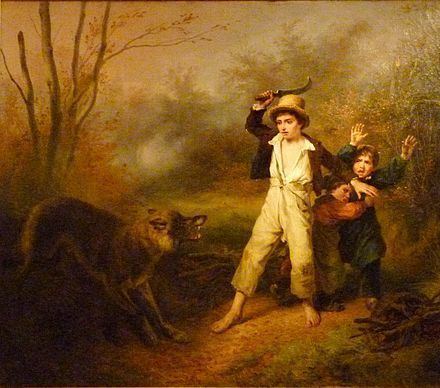Species Canis lupus | ||
 | ||
| Petits paysans surpris par un loup by François Grenier de Saint-Martin, 1833. | ||
The Wolf of Gysinge was a man-eating wolf which, in three months, attacked and killed many children in Gysinge near central Sweden in the early 1820s.
Contents
Attacks
During a three-month period between December 30, 1820 and March 27, 1821, the wolf attacked 31 people, which resulted in a total of 12 fatalities, most of whom were partially consumed by the wolf. The attacks occurred near Gysinge in Uppland, near the border of Dalarna and Gästrikland in central Sweden.
With the exception of one 19-year-old woman, all victims of fatal attacks were children between the ages of three and a half, and 15; in addition, the 15 injured victims were mostly children, except for one 18-year-old male.
Wolf
The wolf was killed on March 27, 1821. Historical accounts indicate that before becoming a man-eater, the wolf was captured as a pup in 1817, and kept in captivity for several years before escaping. In captivity, wolves tend to lose their natural shyness of humans and thus attack more frequently after escape from captivity.
Dramatisation
The incident was dramatised in the BBC Two TV series Manhunters in the final episode, "The Man-Eating Wolves of Gysinge", which aired on 16 December 2005. The episode took artistic liberty in portraying the number of wolves involved in the attacks, showing two animals instead of one. The man-eating wolves were portrayed by Czechoslovakian Wolfdogs.
